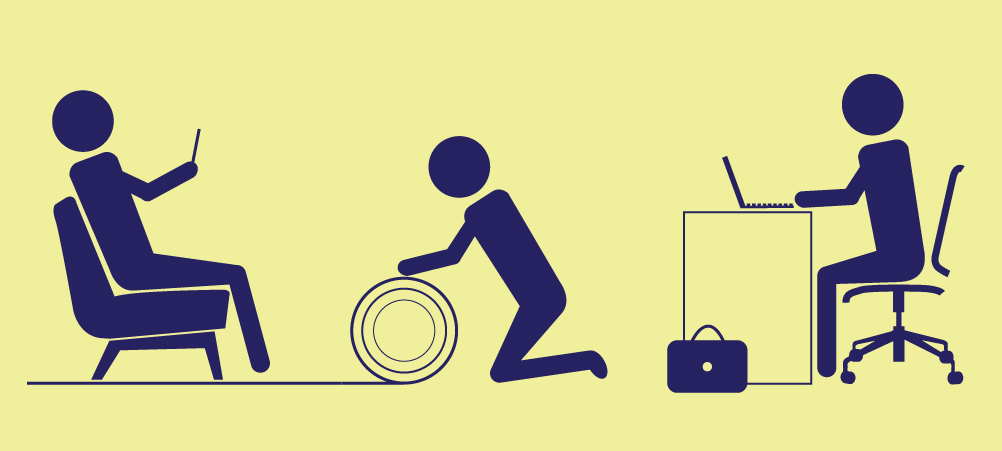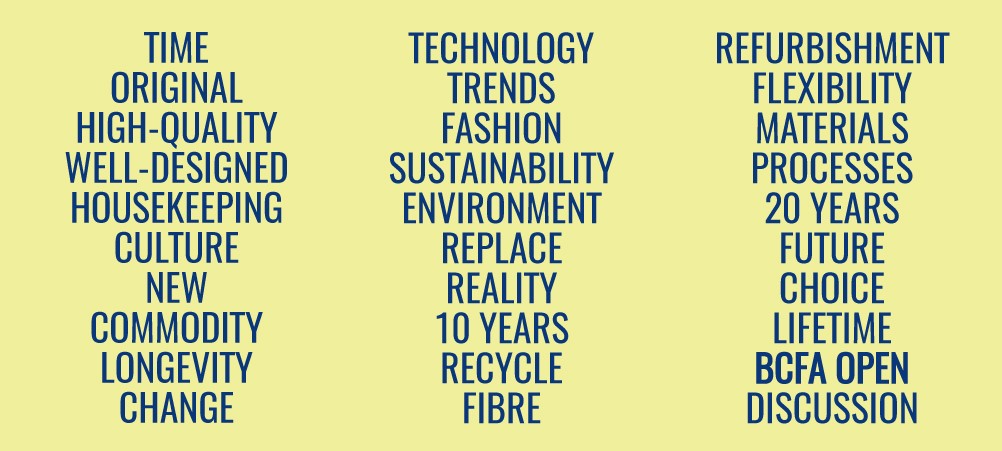Built to last?
Just how realistic is it for the industry to always make products to last? Jim Pendrill reports
Aside from mobile phone companies which have the extraordinary capacity to make consumers habitually upgrade their products, most manufacturers like to build things to last. Given today’s unceasing focus on sustainability, such thinking makes sound environmental and commercial sense, as well as engendering customer loyalty.
But one issue rather stands in the way of this neat argument. Given the rapidly changing tastes and trends swirling around us – not least driven by technology – do clients actually want products that will last for 20 plus years?
Original
Morgan Furniture is one company which makes a virtue of building products designed to stand the test of time. As Managing Director Rodney McMahon alludes: “For us it is really quite simple. The starting point is always to come up with a high-quality, well-designed, differentiated product which will stand the test of time.”
However he admits that how long products actually last is ultimately down to the quality of housekeeping. “I could take you to a venue where we delivered a product 20 years ago but I would be able to persuade you that that piece of furniture had only been there for a year or two because it had been so well maintained.”
But do customers actually want to keep products for that long?
Rob Load, Manufacturing Director at Wilton Carpets, says it is often unrealistic to design long-lasting products. “There is no point designing a hotel carpet for 10 years if the client is going to change the look and style of a hotel within three to five years. The hotel industry is a good example of an industry which tends to view carpets as something that will always need replacing in a rather shorter timeframe. But in reality, even in an environment such as a hotel where the use is so high, there is actually no reason why a carpet cannot last for a very long time.”
McMahon echoes the point. “In my view a more general issue is that the UK has this culture where everyone always wants something new. If you travel around European hotels or restaurants you don’t notice that same urge to constantly change furniture. If anything the trend here in the UK seems to be accelerating.”
Karl Anderson, Head of Design at Gresham Office Furniture, says much depends on what specific piece of furniture you are talking about. “There is a definite split. Everyday items like storage are becoming commodity items where people will buy for the longer term and want longevity in the products. But with key pieces of front-of-house furniture then fads are key and design will change.”
“Everyday items like storage are becoming commodity items where people will buy for the longer term and want longevity in the products”
Design changes
Anderson says design changes driven by technology particularly complicate the picture. “Technology will continue to be a significant driver of changing design and one can only see that accelerating. Trends such as hot-desking and mobile communication are fundamentally redrawing the design map. Design is being driven as much by how people are actually connecting with the rest of an organisation.”
Load agrees. “If you take the carpet industry, as technology moves on and people’s lives change what we put on the floor will change with it. The conventional, traditional carpet may well change with it.”
However he says this needn’t be to the detriment of sustainability. “Take the fact that we are seeing the increased use of recycled fibres in carpets. Literally shredding a carpet back to its basics and remaking it. You could actually end up with a carpet that has been recycled three or four times.”
Refurbishment
In the same vein, the process of refurbishment is becoming increasingly key as companies seek to design products that are timeless but which also have the flexibility to be refurbished, particularly given that traditional upholstery can also take a long time to replace.
Anderson says his firm is constantly looking at ways to fine tune the use of materials and its processes. For instance, it recently invested in a machine to help cut fabrics for upholstery, making the process much more efficient and cutting down on waste. As he explains: “If you take the upholstery of chairs, rather than stapling covers into seats we now employ a drawstring method. Rather than using lots of staples you might now have only one which locks the draw string into place and gives you consistent quality throughout.”
” the process of refurbishment is becoming increasingly key as companies seek to design products that are timeless but which also have the flexibility to be refurbished”
Future trends
McMahon concedes that tastes have changed dramatically over the past generation. “I would say there has been a distinct shift towards people wanting a more eclectic and brighter look. Thirty years ago people would have produced very straightforward and traditional furniture.”
But he remains sceptical over how much the market will really change over the next 30 years. “If you take the home environment in particular, people still want chairs that are nice and comfy and nicely upholstered. I do actually wonder quite how significant the impact of technology will be on future trends in this market. The more technology you have in your life the more you retreat at home wanting something a bit softer.”
McMahon says over the last 25 years a lot has changed superficially and a lot has actually not changed. “People still want nice comfortable furniture but what they also have is a lot more choice now. As consumers talk more about sustainability they will become more focused on where things come from and what they cost.”
And if you want proof that building products to last can still pay dividends many years later just talk to Andersen. As he adds: “We are a family business which is built on the very principle of building to last. We still get customers coming back to us with a product they bought 20 years ago on a lifetime guarantee asking us for our help. That says an awful lot.”
“As consumers talk more about sustainability they will become more focused on where things come from and what they cost.”
*During next month’s BCFA OPEN event in Manchester we are going to be having a discussion panel on the longevity of design. See http://www.bcfaopen.com/events/ for more details.







Comments